Spotlight on Pitch Black
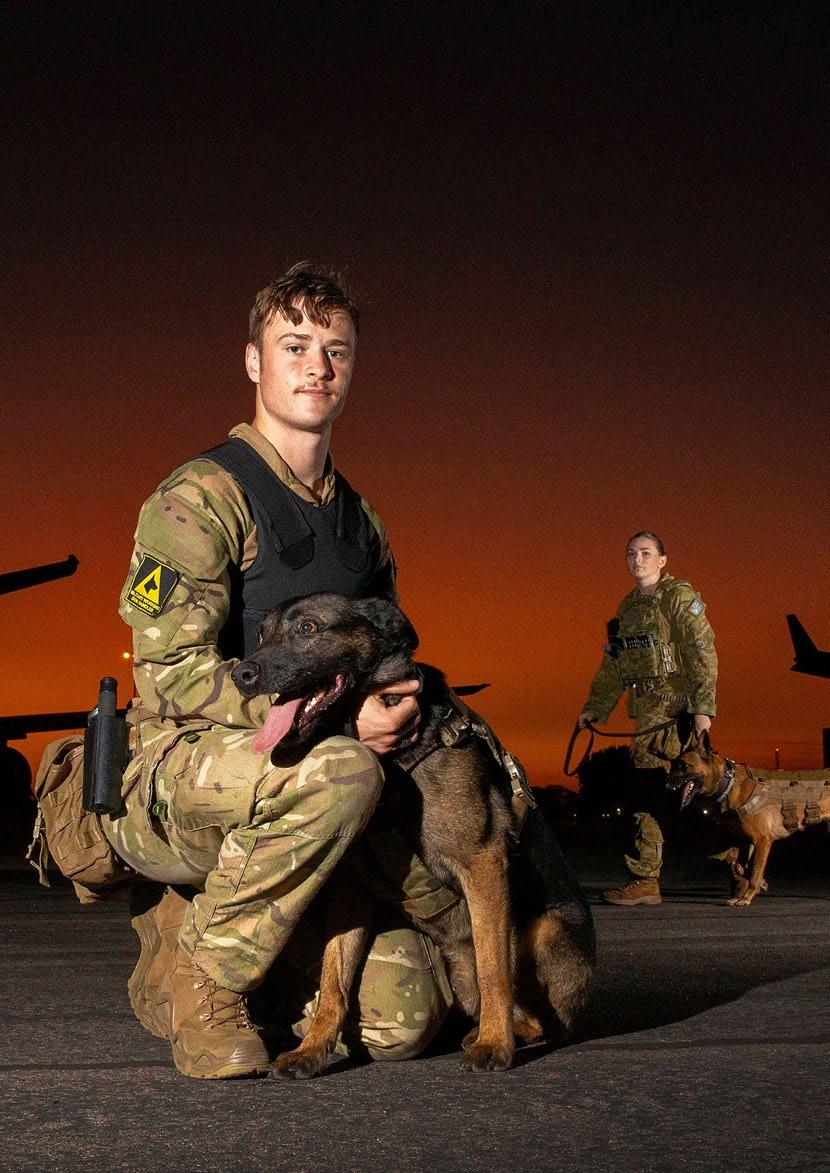
#251 OCT | 22 Air Force Nelson flood response P-3K2 Orion begins fisheries patrols NH90s taking aim with snipers
OUR MISSION
The RNZAF will provide New Zealand with relevant, responsive and effective

Power to meet its security interests.
OUR VISION
An agile and adaptive Air Force with the versatility essential for NZDF operations.
Published by Defence Public Affairs HQ NZ Defence Force Wellington, New Zealand
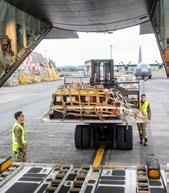
Editor Rebecca Quilliam Email: airforcenews@nzdf.mil.nz
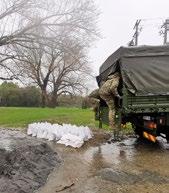
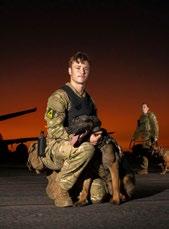
and Layout Defence Public Affairs
Printed by Bluestar Private Bag 39996, Wellington
Email: airforcenews@nzdf.mil.nz
contributions and
the
name,
can be
do
through
to include
and unit
need
provided separate from the
at least
News will hold
in
News
Contents
Air
Design
Distribution
Editorial
ideas are welcomed. They
emailed directly to
Editor and
not
to be forwarded
normal command chains. Contributions need
• writer’s
rank
• photos
text –
300dpi. Air Force
the copyright for submitted articles or photographs it publishes. Articles and photographs published
Air Force
cannot be published elsewhere without permission. ISSN 1175–2337 News 20 First ice flight for the summer season 24 85 Years: Strong history at No. 42 Squadron 26 HUMINT: An aviator’s story 27 Leading the way with milk 32 International collaboration key to space warfare Regulars 03 First Word 22 #FacesOfYourForce 28 Our Heritage 31 RNZAF vs NZ Police: Warriors curtain-raiser 33 Notices 34 Photo of the month NZDefenceForce NZAirForce COVER: Spotlight on Pitch Black PHOTOGRAPHER: Australian Defence Force 04 Fisheries monitoring in the Pacific 05 Delivering aid to drought-stricken Kiribati 06 Flood support to Nelson 08 Spotlight on Pitch Black 14 NH90s taking aim with snipers 16 Reconnect, Reorient, Regenerate: AFLF 2022 18 RAAF celebrates PC-21 Ohakea flights 2 | AIR FORCE NEWS #251
First Word
Tēnā koutou. As Base Woodbourne approached its 83rd anniversary, and while attending the graduation of the latest cohort of aviators from the 22/02 Recruit Course, I reflected on the diverse range of roles that we as aviators undertake on a day-to-day basis.
This day was particularly poignant. While I sat in the shelter of No. 5 hangar, out of the elements watching the parade, a team of 25 aviators and soldiers had been pulled from their various courses and daily activities to deploy to Nelson to assist the Nelson-Tasman Emergency Management Group response to the flooding event that was affecting families and businesses in the region (see page 6).
Similarly, Flight Sergeants attending their promotion course are also indoctrinated in the CIMS framework.
A Base Contingency Force (BCF) provides a ready response capability for small scale local events. During this year’s flooding in Blenheim the BCF was tasked with providing a Unimog on standby to assist with the evacuation of people from hard-to-reach locations.
BASE COMMANDER BASE WOODBOURNE WING COMMANDER PAUL DRYSDALE B Y

Base Woodbourne is a military air base that delivers training and while it is critically important that the training pipeline supports force sustainment, we also take very seriously our operational outputs.
Providing support during local natural disasters is one of the roles that base and camp Commanders have been tasked with by Headquarters Joint Forces New Zealand to support the community in times of crisis. Being part of the response to local emergencies, such as the recent floods in Nelson, the Marlborough floods in July 2021 and the Nelson fires in February 2019, is very important to us as a responsible and willing member of the community.
Preparing our people for their role in supporting the community starts early for some. Students at the Command and Recruit Training Squadron and the RNZAF Officer Commissioning Course are given Coordinated Incident Management System (CIMS) training.
CIMS provides students with a framework of principles, structures, functions, processes and terminology that ensure a common approach when working with other government agencies during a response.
Last year, the BCF was used to evacuate people stranded in Tuamarina during the 2021 Marlborough floods. When needed, a 25-person Local Emergency Response Group (LERG) can be drawn from the base and training schools to support larger or longer duration responses. Such was the case when the base deployed a LERG to the Pigeon Valley fires near Nelson and this year to the Nelson floods.
Relationships with lead agencies and government agencies are key to ensuring the base is able to support a swift and coordinated return to stability for communities. Base Woodbourne achieves this through close relationships with the Marlborough and NelsonTasman District Council Emergency Management Groups. And the Flight Commander of Operations Flight, as Officer in Charge of the BCF, maintains regular contact with Emergency Management Groups. They arrange regular training events to ensure that liaison officers integrate quickly into the Emergency Operations Centre and deployed teams are able to respond rapidly and appropriately to requests for support.
Kia pai tō koutou rā
FIRST WORD |
“Our role as aviators is diverse and valued by the community. The opportunity for the base to be part of the region’s response to emergency events is a very rewarding experience for our people and builds on the trust and acceptance that has been established in the local community over the past 83 years.”
AIR FORCE NEWS #251 | 3
Fisheries monitoring in the Pacific
A P-3K2 Orion and Royal New Zealand Navy Offshore Patrol Vessel

HMNZS Wellington have completed an operation to monitor illegal, unregulated and unreported fishing for the Forum Fisheries Agency (FFA) in the Pacific.
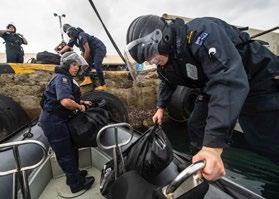
HMNZS Wellington and a P-3K2 aircrew supported the mission along with four Ministry for Primary Industry officers, a Fijian Fishery officer and two Vanuatu Fishery officers.
No. 5 Squadron Commanding Officer Wing Commander Glen Donaldson said the P-3K2 aircrew contributed the benefit of extended range to the operation.
“The squadron patrolled Fijian, Samoan, Tokelau, Tuvalu and Solomon Island EEZ (exclusive economic zone), as well as the ‘High Seas Pockets’ just outside the EEZ limits. The wide area coverage ties in with other nations’ air assets and can help direct maritime assets to target vessels of interest, so it really was a combined effort to ensure compliance across the South West Pacific fisheries.”
HMNZS Wellington Commanding Officer Lieutenant Commander Philip Davies said that monitoring fishing, and maritime security operations in the South West Pacific, were two of the key roles for the Navy’s Offshore Patrol Vessels and the Air Force’s maritime patrol aircraft.
“We undertake these operations regularly throughout the year, for the FFA, MPI and at the direct request of Pacific nations,” he said.
“It’s an important job that ensures vessels in the exclusive economic zones and international waters are following best practice fishing methods and helps to maintain sustainable fish stocks.”
MPI Director of Compliance Services, Gary Orr, said that the collaboration with the Defence Force gave Fishery Officers the reach to patrol a vast area.
“Our team boarded and inspected fishing vessels to ensure they were following all regulations designed to support sustainable fisheries management,” he said.
“A key focus was on inspecting catch records and fish holds for potential offending as well as ensuring they’re using the correct seabird mitigation equipment.
“We also work alongside Fishery Officers from a number of Pacific Islands countries when we patrol their waters so that we can share best practice in fisheries compliance and build both our capabilities and those of our Pacific neighbours.”
Operation Island Chief is one mission in a range of support activities that are conducted by the Defence Force in partnership with Pacific Island countries under Operation Mahi Tahi, until later this month.
| OPERATIONS
4 | AIR FORCE NEWS #251
Delivering aid to droughtstricken Kiribati
An Air Force C-130
Hercules has delivered freight to Kiribati to assist its response to the extreme drought the country is facing.
The flight, which departed Base Auckland recently, delivered spare parts for the desalination plant, a forklift and a utility vehicle. The combined weight of the delivery was just over eight tonnes.
It was the second drought-related flight by the Air Force after a Hercules delivered urgent spare parts for the desalination plant in late June.
Earlier that month the Kiribati Government declared a State of Disaster due to drought. According to government sources, the entire country has been affected - with the most critical situation to be reported on the island of Tarawa.
The latest Hercules flight returned to New Zealand with a piece of equipment owned by the Kiribati Public Utilities Board, which required urgent repair.
Air Component Commander, Air Commodore (AIRCDRE) Shaun Sexton, said the transportation of the muchneeded equipment was important for Kiribati, where the population of 120,000 was affected by the drought.
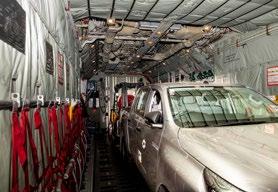
“The Government of Kiribati declared a state of disaster in June and they have requested assistance with the transportation of this equipment.
“Keeping the desalination plant running is vitally important to combat the effects of the drought, and we were happy to task a C-130 aircraft to help our friends and partners in the Pacific,” AIRCDRE Sexton said.
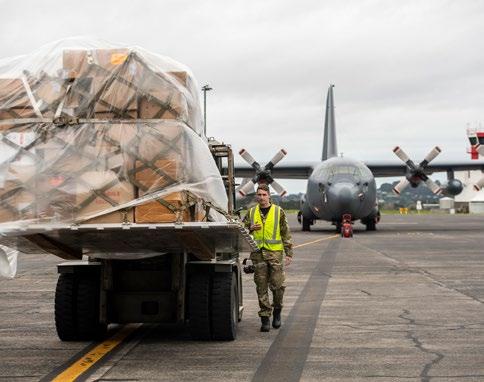
OPERATIONS |
AIR FORCE NEWS #251 | 5
Flood support to Nelson: Woodbourne steps up
Y
A severe weather event hit the Nelson region in the South Island recently and Base Woodbourne deployed personnel to assist local authorities.
The major storms that swept over the area left more than 100 homes deemed unsafe to live in, with hundreds more damaged by slips and flooding. Areas were cut off as flooding and slips damaged roads, including to the main route between Nelson and Blenheim.
Base Woodbourne contributed 26 personnel to assist the Nelson Tasman Emergency Operations Centre (EOC). A 25-person Local Emergency Response Group (LERG) deployed to the region. In addition to this there were two Air Force Liaison Officers who worked with the Nelson Tasman EOC.
The NZ Army also deployed 14 personnel from Burnham Military Camp to the West Coast to help local authorities there deal with flooding. They delivered supplies, weather barriers, sandbags and helped with evacuations from homes.

The Woodbourne LERG Commander Flight Lieutenant Drummond said the initial focus when deploying was to get there safely and establish 24/7 operational support to the EOC.
This is not their usual day job, but everyone was really enthusiastic and willing to help, he said.
“Events like this provide opportunity for the base to contribute to the community. Back in Marlborough, a second LERG was on standby to assist locally, as well as members of the Base Contingency Force who were ready to provide driving assistance to the local Civil Defence Response Teams.”
He had heard many positive stories on the ground of Air Force people helping out.
“The New Zealand Defence Force was just one organisation assisting with this severe weather event. There were other organisations and volunteers helping out too, and we don’t want them to go unnoticed.”
In the five days personnel were on the ground they assisted with evacuations with the New Zealand Police, cordon
“Most of the personnel of the LERG were instructional staff or students who conduct trade training at Base Woodbourne.”
SENIOR
COMMUNICATIONS ADVISOR CHARLENE WILLIAMSON B
| OPERATIONS 6 | AIR FORCE NEWS #251
control of evacuated areas, transportation of critical equipment to isolated communities, and reconnaissance of isolated communities.
Woodbourne Base Commander Wing Commander (WGCDR) Paul Drysdale said as part of Op Awhina, the name given to operations during national disasters, the base always has a LERG ready to deploy at short notice.
“Because of the transient nature of trainees on base, we look to the training squadrons to support the bulk of the manning for the LERG.
“In addition, we will use the Base Contingency Force, and base units to supplement with team members and heavy and light 4x4 drivers,” he said.
In the event that Op Awhina is stood up, or help is required from local councils or emergency management Base Woodbourne has responsibility for the Marlborough, and Nelson-Tasman regions.
“Base Woodbourne is a military air base that delivers training, and takes very seriously its operational responsibilities and outputs, and we have made significant progress in operationalising our processes to enable this,” said WGCDR Drysdale.
The opportunity for the base to be part of the region’s response to Civil Defence events was rewarding, he said.
LEFT
Air Force personnel and Unimogs leave Base Woodbourne to help in the wake of Nelson-Tasman flooding
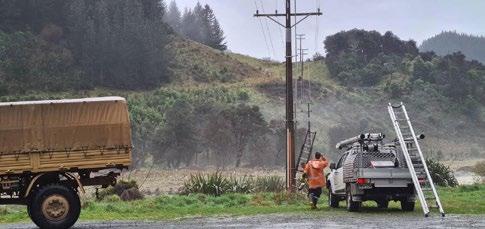
TOP MIDDLE
NZ Army soldiers in Westport with flooding assistance
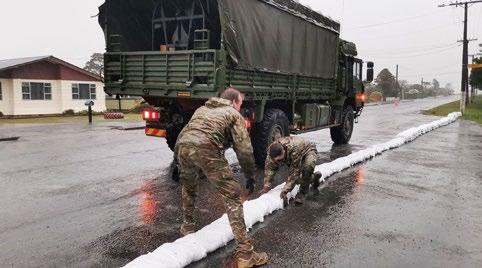
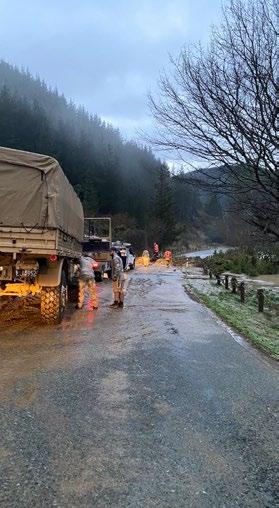
BOTTOM MIDDLE
Air Force personnel helping in NelsonTasman flooding effort
RIGHT
Air Force personnel helping in NelsonTasman flooding effort
“To be a part of the recent floods in Nelson, the Marlborough floods in 2021 and the Nelson fires is very important to us as a responsible and willing member of the community.” -Wing Commander Paul Drysdale
OPERATIONS | AIR FORCE NEWS #251 | 7
Spotlight on Pitch Black
Australia’s Northern Territory recently hummed with military activity from more than a dozen international Air Forces, with ground crew from the Royal New Zealand Air Force in the thick of it.

Exercise Pitch Black was a large-scale biennial collective air training activity that aimed to strengthen regional partnerships, improve interoperability between nations and promote regional stability. This year’s exercise included over 100 aircraft, 2500 people and 17 nations in total.
The Defence Force contributed nearly 60 personnel made up of security forces and military working dogs, chefs, communication and information system technicians, medics, ground support equipment technicians, aviation refuellers, military police, air movers, intelligence specialists, logistics officers, and firefighters.
Its efforts for the exercise focussed on Air Base enabler trade groups who were critical in the delivery of air power effects.
Detachment Commander and Logistics Officer Flight Lieutenant (FLTLT) Shirley Barakuta said the personnel had been performing their jobs the same as they would on operations.
“Our security forces patrolled the airfield and ensured the security of the aircraft and people. Our aviation fuel specialists fuelled aircraft and monitored fuel quality, our air load team loaded aircraft, and our caterers prepared and served meals.
WORDS SQUADRON LEADER KIRI OHLSON
PHOTOGRAPHY ROYAL AUSTRALIAN AIR FORCE
| FEATURE 8 | AIR FORCE NEWS #251
“This exercise was a great opportunity for me to enhance my operational logistics experience through organising the detachment and working closely with my Royal Australian Air Force (RAAF) colleagues to effectively augment their operational enabling teams.”
Exercises such as Pitch Black provided a unique opportunity for personnel to practise their roles in an overseas environment in collaboration with other militaries. This ensured that Defence Force people were combat capable, trained, equipped and ready to contribute to international peace and security, FLTLT Barakuta said.
Personnel were embedded with RAAF units in Darwin and Tindal to support the exercise. These multinational exercises provide opportunities for enabling trades to deploy and operate from a remote location outside of Aotearoa New Zealand.
The aircraft participating in the exercise ranged from the fast and lethal Typhoons, F-16s, F-15s, and F-35 jet fighters to the larger aircraft such as the KC-130J, Multi-Role Tanker Transport, and Voyager.

FEATURE | AIR FORCE NEWS #251 | 9
EXERCISE HEATS UP FOR MILITARY WORKING DOGS
Three RNZAF Military Working Dogs participated in Exercise Pitch Black. The canine team is used for security patrols and asset protection, both employed domestically and overseas.
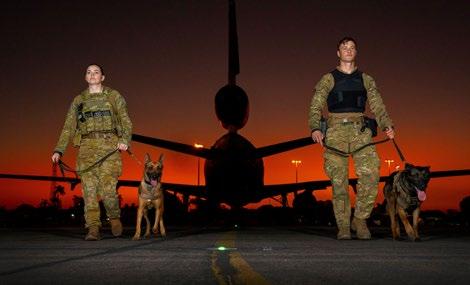
Deployed in Darwin, the Military Working Dogs (MWD) had to adapt to the hot temperatures, after leaving our wintery climate.
Leading Aircraftman (LACW) Brooke Hitchenson was one of the RAAF MWD handlers working alongside our Air Force team.
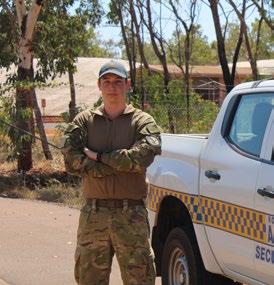
“My favourite thing about my job is coming to work with my military dog Karma, training her and watching her improve day-in and day-out.
“One of the great things about working with international dogs is learning the different variety of training and different methods and just learning everything that we can from them.”
LAC Byron Buys is one of the Air Force’s MWD handlers who participated in the Australian exercise with his dog Kaiser.
“The hot weather was a massive adjustment for Kaiser, we tried to keep him in the shade as much as possible, especially during the middle of the day when it was the hottest. We brought cooling blankets over with us and made sure he got plenty of water - by the end he was getting used to the heat.
“Kaiser is happiest when he’s got one of his toys out so if he’s biting a tug toy and we’re out playing in the yard he’s having a good time. He loves his job, he wakes up every day rearing to go and get into it,” LAC Buys said.
“The unique thing for us at Pitch Black was the fact that there were so many nations there and we were able to work around so many different aircraft and get our dogs exposed to some aircraft that they may be exposed to back home.
“It was also a great opportunity to meet new people and work with our Australian counterparts. We got to learn how they did things over there compared to how we worked and it was quite similar so it made it easy to work together.”
SECURITY FORCES PATROL AT TINDAL AIR BASE
Air Force Security Forces deployed to RAAF Base Tindal were responsible for the security of the air base, including personnel and equipment.
This involved carrying out regular patrols of the base perimeter to monitor safety and security, providing force protection against a range of threats, as well as delivering readiness training to service personnel back in New Zealand.
Aircraftman (AC) William Lennox was embedded with Security Forces in RAAF Base Tindal.
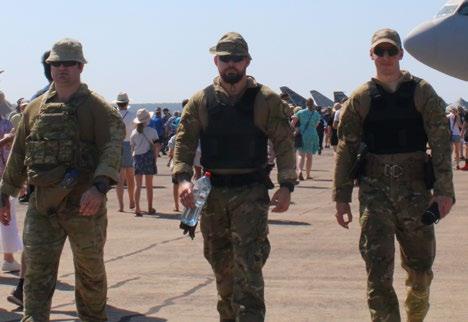
1 2 3 | FEATURE 10 | AIR FORCE NEWS #251
“On a typical day we conducted roaming patrols, and aircraft checks. We walked around the aircraft to make sure everything looked as it should, there was nothing unusual, and nothing had been been tampered with.
“On our patrols we looked out for anyone who might be in an area they were not supposed to be in, or doing things they were not supposed to be doing. If we saw anyone suspicious we would then approach them and find out if they were allowed to be there or not,” AC Lennox said.
“My favourite part about Pitch Black was been working with the Aussies and noticing the similarities in what we do day to day. We do similar training but they just specialise a lot more than we do.”
GSE TECHNICIANS
ENABLE AIR OPS AT PITCH BLACK
Air Force Ground Support Equipment (GSE) technicians have been embedded in the RAAF Darwin’s Maintenance Equipment Operations and Maintenance Section, at Exercise Pitch Black.

The Air Force’s GSE team carried out repairs and maintenance on ground support equipment throughout the exercise.
Sergeant (SGT) Rachel Dean was the senior Air Force GSE technician embedded with RAAF No. 13 Squadron. She was a member of the first team of Air Force GSE technicians that participated in Pitch Black in 2012.
“Our role here for Pitch Black was to embed with the RAAF GSE technicians. We worked on a large range of equipment, and during the period we were pretty busy.
“We worked on anything from trucks, fuel systems, fuel tankers, Ground Support Equipment including aircraft tugs, aircraft loading equipment and plenty more,” SGT Dean said.

A typical day for the team started with some physical training, followed by bike rides, allowing the group to see a bit of Darwin, she said.
“Then we came into work, changed into blues and blacks, and just cracked on to whatever work needs to be done. Our work varied from routine maintenance to defect repair. A lot of the equipment was either the same or similar to what we have at home, meaning we could just jump straight in on to the tools and already know what we were looking at.
“We also carried out some cross training and swapped stories on what had and hadn’t worked well for us.”
The RAAF GSE technicians were also responsible for the arrestor gear (emergency braking systems), which was a critical system on an exercise of that scale, SGT Dean said.
“It is always great learning about a new system and even more so seeing it in action.
“Working with our Aussie and Canadian counterparts was really rewarding. It’s not just about getting equipment out the door, it’s about building those relationships with our mates across the ditch and our partner nations.”
ONE MWD handlers LACW Brooke Hitchenson
Security Forces at the exercise Open Day
SGT Rachel Dean servicing an aircraft loader
LAC Andre Roden investigating fault codes from the transmission sensor on an F110 Schopf Aircraft

(RAAF,
left) and LAC Byron Buys (RNZAF, right)
TWO AC William Lennox on duty at RAAF Base Tindal
THREE
FOUR
FIVE
tug 4 5 FEATURE | AIR FORCE NEWS #251 | 11
COMMUNICATIONS
IN THE FIELD
Communications and Information Systems (CIS) technicians were rotated through a deployed radar camp in a remote location in the Northern Territory, in support of the exercise CIS technicians were responsible for interconnecting and supporting military air elements with the use of information and communication technology.
In a deployed environment, the primary role of CIS technicians is to provide a link back to the networks in Aotearoa New Zealand as well as Air Ground Air communication with various aircraft. This involves setting up and operating radio circuits, satellite dishes, and deployable nodes.
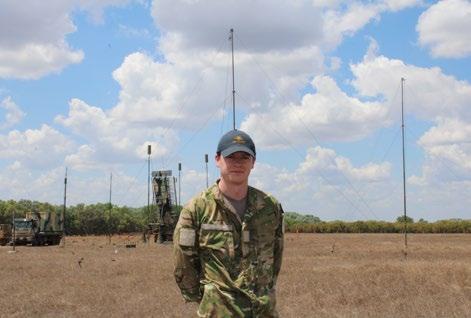
CIS technician Corporal (CPL) Sajan Gautam said the team had been embedded within the 1 Combat Communications Support unit.
“We provided High Frequency (HF) communications subject matter expertise and advice because the team hadn’t used HF communications for a long time. Our work allowed them to increase capability in HF providing redundancy, in the event that satellite and other communication capabilities went down.
“We had three different HF antennas set up and we used different antenna designs to best suit our objectives. Some antenna are good for point to point communications and others are good for talking to aircraft,” CPL Gautam said.

“It’s vital to understand how different antennas propagate radio waves, as it allows us to decide the best antenna for the job. Other factors come into play such as, frequency, distance, and the time of day. These are some of the skills that CIS technicians learn and are essential for conducting effective HF communications.”
The exercise had provided opportunities for the team to see how other countries used their systems for their needs and how they differed to the needs of the Defence Force, he said.
“It was interesting to see how other countries set up their systems as well, some countries were very mobile and their systems were scalable, while others were very static orientated.
“My favourite part of this exercise was the field phase, as it closely related to our work and mission objectives within the CIS trade.”
FIREFIGHTERS LAY DOWN CHALLENGE AT PITCH BLACK
Air Force firefighters practised their skills against their RAAF and United States Marine colleagues at exercise Pitch Black.
The firefighter’s challenge was developed by Sergeant (SGT) Jeremy Larcombe, from RAAF Base Tindal, when he was returning to work after an injury.
He wanted to set himself a challenge that would incorporate a range of firefighting skills such as donning his gear, breathing apparatus, laying hoses, entering a building, rescuing a casualty, climbing stairs, pulling up a weight, running out hoses and dragging a casualty to safety.
“I used this challenge to measure my progress and help give myself confidence that I was ready to get back to work and respond to situations when I need to,” SGT Larcombe said.
“It was been great to see the Kiwis take it on and it created some good rivalry between us and pushed us to work harder.”
LAC Robbie Smith was one of the Air Force firefighters embedded with the team in Tindal.
“It was been really good working with the Aussies,” he said.
“It was good to know that we can come over and just slot right in to the roster because we do a lot of the same things.”
1 2 | FEATURE 12 | AIR FORCE NEWS #251
4
REFUELLERS ENABLING AIR OPERATIONS IN THE NORTHERN TERRITORY
Air Force aviation fuel specialist LAC Katrina James was embedded in the refuelling sections at RAAF Bases Tindal and Darwin during the exercise. Aviation fuel specialists are responsible for quality control testing and delivery of aviation fuel, and they also train to drive and operate a wide range of vehicles and machinery.
“I had been driving the Aussie fuel tanker to deliver fuel to aircraft so they could continue flying through the exercise.
“It had been good to get the exposure to that type of vehicle because we only have smaller class 2 and class 4 tankers at home in Ohakea,” she said.
“The Aviation Fuel section in Auckland has the Scania, which is a class 5 vehicle. The set-up here is similar to at home but the Australian vehicles just have some extra components that we don’t have.
“This is my first exercise as an LAC refueller, so the sheer organisation and scale of it with so many friendly forces from different countries was amazing. I wanted to use my trade training and apply it here in another country, working alongside other nations to do the job to the best of my ability and I think I achieved that.”
PLTOFF Kelsey May completes the firefighter’s challenge at RAAF Base Tindal FIVE
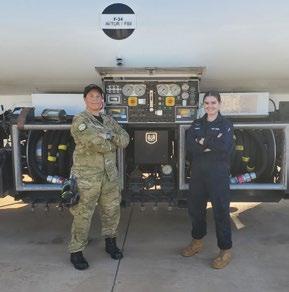
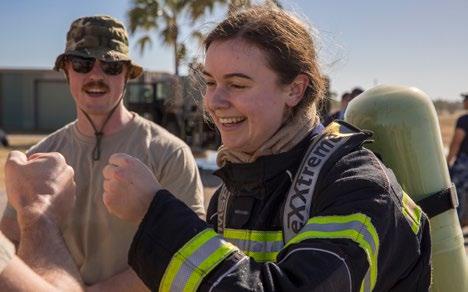
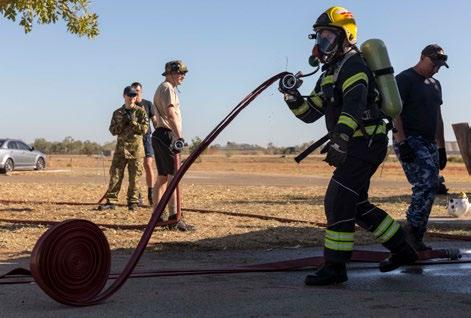
5
The exercise had provided LAC James with the unique opportunity to experience aircraft not flown in Aotearoa New Zealand, including F-35 and F-22 jet aircraft as well as the C-130J and French Spartan.
“It was a blast to be honest because we don’t see fighter jets at home. And interacting with the other forces from Australia, France and the United States was great because we’re working together but also socialising together because we were living in the same accommodation block,” LAC James said.
“It was an adventure, and I felt blessed to have been a part of it. It was an amazing experience working with other nations and the gratitude that they had shown towards us. They were pretty impressed with our work ethic and attitude to the job.”
ONE CPL James Horne showing RAAF personnel how to set up the HF
TWO AC Ben Coupar in front of the HF towers THREE Firefighters challenge at Pitch Black FOUR
LAC Katrina James and LACW Emma Nearmy (RAAF) in front of the mobile refuelling vehicle
3
FEATURE | AIR FORCE NEWS #251 | 13
NH90s taking aim with snipers
REBECCA QUILLIAM & CHARLENE WILLIAMSON B Y
An NH90 helicopter has played an integral part in the training of four New Zealand Army snipers as they prepare to move into roles that will enable the development and effective training of our sniper capability.
The Sniper Supervisor course, run by Combat School, Land Operations Training Centre (LOTC) has run six times in the past 15 years and prepares our Corporal snipers for a role as a Sniper Supervisor in our Infantry and Special Forces units.
As part of the course students are required to plan and conduct a variety of exercises in order to train and evaluate snipers in a live-firing tactical environment. One of these exercises was conducting aerial fire support from the NH90. For this role the 7.62mm Designated Marksman Weapon and 12.7mm Anti Material Rifle were used.
Pilot Flight Lieutenant (FLTLT) Paul Van Der Meulen said the training recently took place at Waiouru in conditions that were near perfect.
“We did a couple of serials from the hover and then a sideways advance towards stationary targets,” FLTLT Van Der Meulen said.
“The course then culminated in a battle handling exercise, which involved some planning on their part.”
For the final exercise, the NH90 dropped off a team on a high point overlooking the Argo Valley in preparation to ambush a vehicle.
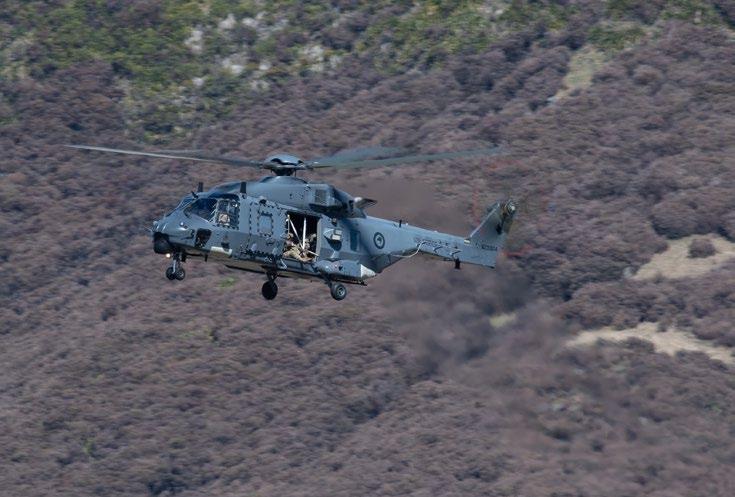
“After the vehicle was neutralised the helicopter was flown in an over-watch pattern until a ground team came in,” he said.
“In terms of flying, we try to give the snipers a stable platform to shoot from.”
| TRAINING
14 | AIR FORCE NEWS #251
It was great to take part in the exercise and experience what it was like to have the snipers train from the helicopter, FLTLT Van Der Meulen said.

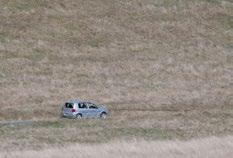
“It’s always good to train with the Army and be able to provide a service to them – especially sniping from the aircraft as it’s not something that we do often.”
Wing Sergeant Major Small Arms Wing, Combat School, Land Operations Training Centre, Warrant Officer Class Two Taniela Jonson said students were instructed and tested on a number of skills throughout the six-week course.
“Students plan and conduct sniper badge testing of unit sniper courses, employ sniper teams in a tactical environment, design sniper continuation training and plan and conduct sniper live firing activities.”
Due to the high standards of skills and assessments required there can be a high failure rate on the Unit Snipers course. The Army will qualify or “Badge” fewer than 10 snipers per year, so the importance of being able to develop current snipers to step into supervisor roles to select, train and develop students was invaluable, he said.
Effective continuation training for snipers, once qualified, is important due to the constant evolution and development of capability, he said.
“Sniper supervisors are vital in advising commanders in the training and employment of snipers, so their integration overlaps with other assets,” he said.


One of the students said the course had given them the ability to force generate, by giving them the skills to qualify more snipers.
“For me specifically, I can now run a sniper course with some help, and also qualify snipers on their annual badge shoot qualification.
“If we aren’t able to qualify on this course then we would not be able to maintain the sniping trade.”
The current information age and technology was evolving fast, and new capability and development in those areas helped to increase a soldier’s survivability on the battlefield, the student said.
TRAINING |
AIR FORCE NEWS #251 | 15
Reconnect, Reorient, Regenerate: AFLF 2022
REBECCA QUILLIAM B Y
Challenges faced by the Royal New Zealand Air Force were tackled head-on at this year’s Air Force Leadership Forum (AFLF), held at Base Ohakea.
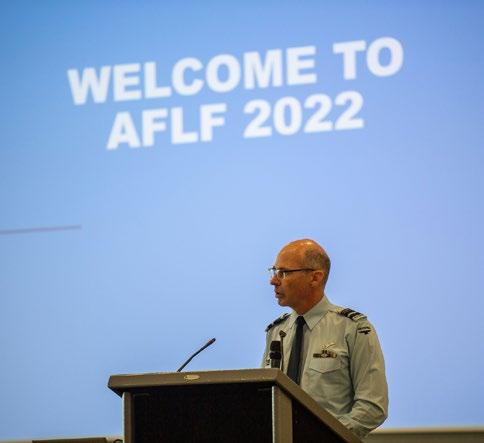
Ahigh attrition rate and improvements in remuneration were acknowledged and discussed in the context of a global pandemic and a “super-heated” local job market.
The theme of reconnecting, reorienting and regenerating were homed in on during the day-long forum, which saw presentations from the top leadership as well as guests Dr Bronwyn EvansKent from the Ministry of Defence and Commander Pacific Air Forces General (GEN) Ken Wilsbach.
“Importantly what we’ve got to do is regenerate forward to something and not backwards. We are an Air Force still in transition to new capabilities and new ways of doing things,” Chief of Air Force Air Vice-Marshal (AVM) Andrew Clark told the forum.
“The international situation has changed and the world has tilted a few degrees around us. We can see that in the global context, but also in our own region in the Pacific.”
The New Zealand situation had also changed over the past couple of years, where the Government, which had been focussed on a health response to the pandemic, was now moving towards economic recovery in a super-heated employment market, AVM Clark said.
“We must now focus on regeneration of our capability, which has significantly atrophied during the last couple of years.”
Chief of Defence Force Air Marshal (AM) Kevin Short pointed to increasing international difficulties, and discussed direct challenges to the rules-based order, democracy versus autocracy and the increasing proliferation of misinformation and disinformation.
AM Short also acknowledged the Defence Force’s high attrition rate, which was the worst he had seen in decades.
“There’s a strong job market and New Zealand industry has discovered a very capable, disciplined and skilled work force in the Defence Force and they are attracting our people.”
He finished by telling the forum how proud he was of the Air Force, which continued to deliver operationally in trying situations.
“The Air Force just keeps delivering. It doesn’t matter that we’ve had Covid, it doesn’t matter we’ve been working in MIQs, it doesn’t matter that we’ve been isolated. The fact is that the Air Force has continued to deliver globally.”
In a panel discussion, Air Component Commander Air Commodore (AIRCDRE) Shaun Sexton said the Air Force had been delivering well on missions.
| LEADERSHIP EDITOR
16 | AIR FORCE NEWS #251
LEFT
MIDDLE
Commander Pacific Air Forces GEN Ken Wilsbach at Ohakea’s Biggin Hill before delivering his keynote speech

RIGHT
“What I hear is that people want to be involved and active, they want to serve and do the things they joined for. But they also want suitable recognition for what they do and they want the fun aspects, like sport, which is thankfully returning. As leaders we need to do all we can to enable the ‘fun’ while balancing mission, which of course is generally fun too!”
In his keynote address, GEN Wilsbach said the New Zealand Defence Force played a “critical role” in the Pacific. From the US stand-point they were counting on New Zealand in a number of areas, including defence diplomacy in the region, where Aotearoa New Zealand’s voice mattered and had impact.

It was also important for the Defence Force to give its perspective on international matters, he said.
“We have our US perspective and we don’t corner the market on all the perspectives that are out there and sometimes we’re wrong and so coming in with other thoughts is so valuable. I welcome that, even if you say we are wrong, I want to know about that.
“From a capability standpoint, intelligence sharing is huge because none of us have enough to satisfy all the questions we have.”
AVM Clark wrapped the forum up by saying the Air Force needed to adapt and be smart operators with new technology. He pointed to the high attrition rate and how the Air Force needed to work to keep in, and attract people to, the service. In particular, it was incumbent on leaders at all levels to look after their people and play their part in moderating work flows and guard against burn out.
“We need to give the people that we have a sense of purpose and a sense of perspective.”
LEADERSHIP |
AVM Andrew Clark opening the Air Force Leadership Forum
Forum panel discussion with (L-R) AIRCDRE Shaun Sexton, AVM Andrew Clark, AIRCDRE Ian Mower, W/O Kerry Williams
“Despite some headwinds we are delivering on the mission and delivering well. Don’t forget this as you take-on the daily grind, importantly don’t let your people forget it.”
–Air Commodore Shaun Sexton
AIR FORCE NEWS #251 | 17
RAAF celebrates PC-21 Ohakea flights
The Royal Australian Air Force (RAAF) has hit a milestone with their PC-21 aircraft, bringing four of their single engine propeller aircraft across the ditch for the first time to support an Aotearoa New Zealand-based exercise.
Exercise Raven Kahu was undertaken recently with No. 4 Squadron from the RAAF and the New Zealand Army’s Joint Terminal Attack Controller (JTAC) personnel, undertaking JTAC training.
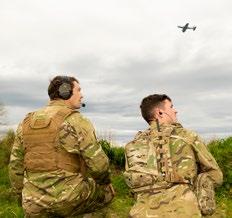
RAAF No. 4 Squadron Detachment Commander Squadron Leader (SQNLDR) Ian DeCarlo said this exercise was brought about from Air Force to Air Force talks between senior leaders from the RAAF and the Royal New Zealand Air Force.
Through these conversations it was determined the JTAC capability was one that could do with support. This was primarily because throughout Covid-19 restrictions, currency became an issue as they depended on international support from outside militaries to facilitate their training.
With No. 4 Squadron able to take their PC-21 aircraft out of Australia, a deployment to New Zealand to provide support to their Kiwi counterparts was the perfect fit.
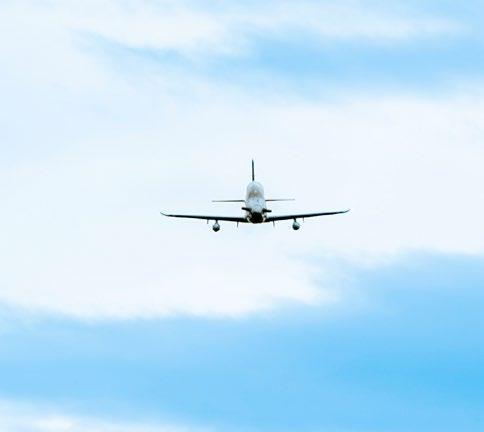
The No. 4 Squadron PC-21 is the primary ab-initio training platform for Australia Defence Force JTACs and, up until this exercise, this aircraft had not deployed internationally.
“Training alongside our New Zealand partners was a good opportunity to provide support outside of Australia. Working with our close partner, New Zealand, was the ideal place to start,” SQNLDR Ian DeCarlo said.
This saw Exercise Raven Kahu created, with No. 4 Squadron working closely with Staff Sergeant Jerome Kingi, the New Zealand Army senior JTAC Instructor from 16th Field Regiment.
| PARTNERSHIP SENIOR COMMUNICATIONS ADVISOR KIRSTY LAWRENCE B Y
18 | AIR FORCE NEWS #251
However, it’s not an easy task to deploy four single engine propeller aircraft across the Tasman Sea, and SQNLDR DeCarlo said they did a test run in Australia first.
In order to validate the planning, equipment, and support requirements for an over-water deployment, the squadron took the planes from their normal base in Williamtown, New South Wales, to Tasmania. This put them in a good position for their journey to Base Ohakea.
To come to New Zealand SQNLDR DeCarlo said the four planes had to head north first, refueling and staying a night in Norfolk Island, before heading down to Base Ohakea.
While in Ohakea they flew four sorties a day in support of JTAC and Joint Fire Observer (JFO) training.
Two JTACs from Australia also came for the exercise as well as six contractor aviation mechanics to provide maintenance support to the aircraft. RAAF personnel and equipment came to New Zealand in a RAAF C-27J.

SQNLDR DeCarlo said the training had been a good experience and there had already been discussions about the possibility of this type of training again.
“The exercise provided valuable training to NZDF JTACs and JFOs and enabled them to train in New Zealand rather than travelling long distances abroad. The feedback that we have received is that future training such as this would be beneficial.”
He said they didn’t often get to work with other countries JTACs, especially in the past two years due to Covid-19, so it was a good opportunity to work with a partner nation and make sure their procedures were aligned.
“It provides us the chance to validate our procedures while working with partner nations.”
PARTNERSHIP |
AIR FORCE NEWS #251 | 19
First ice flight for the summer season
The first group of New Zealand Defence Force personnel has arrived in Antarctica on the Air Force’s first ice flight for the 2022/23 season.
Each year, under Operation Antarctica, the NZDF provides support to Antarctica science and research programmes.

That support includes air transport, personnel working with the New Zealand Antarctic Programme, and personnel for the New Zealand/United States Joint Logistics Pool.
Over the 2022/23 summer season, the NZDF will deploy about 200 personnel in a variety of roles to support New Zealand and United States’ Antarctic programmes.
The flight south late last month was the first of six return flights scheduled for No. 40 Squadron’s Boeing 757 aircraft, taking passengers and cargo to the continent between now and March next year. Another nine flights by the squadron’s C-130 Hercules aircraft are scheduled between November and January.
Over the season, 27 personnel will be based at Harewood Terminal, assisting air movements of cargo and passengers on Antarctic flights including those of other nations.
There is a distinct tri-Service flavour on Op Antarctica as personnel deploy from all three Services – the Royal New Zealand Navy, New Zealand Army and the Royal New Zealand Air Force.
Nine NZDF personnel were on the Boeing’s first flight south. They will be using their skills in logistics, as supply technicians, and in communications as part of the Scott Base Support Team. The group also includes a Navy chef, and two plant operators who operate heavy machinery.
Those working as watch keepers and in communications at Scott Base work 24/7 shifts, keeping in contact with scientists working in the field, with helicopter and fixed-wing aircraft operations, and providing safety checks and communications with staff working off base.
Other personnel being deployed to Antarctica include firefighters, fuel operators, a ship offload team, a driver support team, instructors for Antarctic field training, and a 10-strong Army light engineering team who will help with building maintenance and construction tasks.
Antarctica NZ is undertaking redevelopment of Scott Base, some materials for which were delivered to Antarctica earlier this year on Navy tanker HMNZS Aotearoa’s maiden voyage to the ice.
Senior National Officer for Operation Antarctica, Major Lucy Wright, says the deployment is a special one for NZDF personnel, who use their skills and training to support important scientific and research programmes while living and working in the unique Antarctic environment.
There will also be a special moment for the youngest member of the NZDF team who has the honour of lowering the winter flag and raising the summer flag, marking the handover from the team wintering over to the incoming summer team.
“It’s an opportunity of a lifetime. They might experience temperatures of -40 degrees Celsius, run their first marathon on ice, learn first-hand about scientific and research developments, keep in touch with research teams who are out in the field for more than two months, see wildlife and ice formations.
“Whatever role they’re in, they’re part of something special.’’
| OPERATIONS
20 | AIR FORCE NEWS #251
NZDF sparks mangrove-planting project in Maldives

New Zealand Defence Force staff attending an environmental security forum in the Maldives are ensuring everyone treads lightly on the low-lying islands, by quickly influencing and calculating the offset of the forum’s carbon footprint.
The United States Indo-Pacific Command (USINDOPACOM) is also looking to ensure it offsets its carbon footprint for future conferences, in a similar manner.
The Defence Force’s Future Force Director Wing Commander (WGCDR)
Trevor Hammond and Sustainability Director Dr Lee Bint attended the 2022 Indo-Pacific Environmental Security Forum (IPESF) recently.
WGCDR Hammond had a chance conversation with an Australian reef ecologist, who had floated the idea with the conference organisers previously, to make it a carbon-neutral event, but to no avail.
Wondering whether it could be done retrospectively, WGCDR Hammond and Dr Bint spoke to the organisers and were asked to give a presentation on the idea the next morning.
Before dinner that evening, the Defence Force team created a spreadsheet and calculated the carbon footprint of 140 people flying, catching ferries, staying at the resort and producing waste. They also added a 10 percent margin for error.
“The organisers didn’t hesitate at the estimated US$22,000 (NZ$36,034) cost to offset emissions, and said ‘Okay, that’s fine’” WGCDR Hammond said.
They decided it would be good to do something locally in the Maldives – and the mangrove planting project fitted the bill.
With this figure in mind, the USINDOPACOM Environmental Security Program has proposed to work with botany experts in the Maldives to design and execute an environmental project focussed on mangrove sustainability on Huraa Island.
The USINDOPACOM Environmental Security Program will work with Maldivian experts and island residents to implement the proposal currently under development and contribute to funding this to at least US$22,000 which is the carbon footprint dollar value of the 2022 IPESF.
The 2022 IPESF had a number of goals and themes. But as the forum progressed the question of carbon footprints and how to actively address them arose.
“The NZDF identified that hosts USINDOPACOM had an opportunity to lead by example and offset a quantifiable carbon footprint for the event,” said US Brigadier General David Gardner.
“Among the military leaders I met in the Maldives, we spoke of the importance of environmental stewardship as part of our defence focus.
“We recognise that we should factor into our planning and operations the impact of carbon emissions on the environment.”
This was set out in the US Department of Defense’s 2014 Climate Change Adaption Roadmap, he said.
ENVIRONMENT |
AIR FORCE NEWS #251 | 21
Making a difference at YDU
The Burnham-based aircraft technician has been with the Air Force since 2014.
In 2021 he was seeking new challenges and development opportunities, which led him to join the tri-service Youth Development Unit (YDU).
Together, YDU and Cadet Forces deliver courses to more than 6000 young people every year across their North, Central and South locations.
Corporal (CPL) Averill says they’re aimed at training, upskilling, and building young people’s leadership abilities.
“Self-discipline, confidence, co-operation and respect are the values the unit fosters in youth.”
The work is diverse, and each day brings new experiences and challenges.
“Taking trainees out into the bush, rafting down rivers, and up on the high ropes, all provide a good sense of adventure. There are plenty of times where it doesn’t feel like work.
“On the flip side, there are plenty of times with high workload and lots of demands, but this is what allows you to grow. Every course is filled with memorable moments.”
Instructors go through leadership, teaching, mentoring and adventure qualification; skills which CPL Averill says are often hard to gain in some trades.
“You’re not only rewarded by seeing the growth in the trainees, but also through your own development.
“You’re able to help inspire, motivate and encourage people to see and chase the opportunities available to them, while working on your own goals at the same time.”
While some personnel have reservations around temporary postings and whether they’ll impact career progression, CPL Averill says the benefits gained outweigh any delay to promotion.
“You come away from it with a more wellrounded skill set, a wider perspective and understanding of the NZDF, and a lot of networking under your belt.
“There’s lots you can then take with you back to units or into your future.”
Short tours of duty can also give personnel an idea of what it’s like working in YDU.
CPL Averill says the best part of the job is the great crew he works with - high achievers in their own fields, from all three services.
“Positive, supportive, enjoyable staff make the atmosphere great, and regular social functions keep the team tight.”
He believes it’s important that personnel joining YDU have a willingness to grow, show humility, compassion, self-discipline - and, of course, an enjoyment of the outdoors.
For CPL Averill, it’s a truly rewarding job that sees him learning and making a difference in communities every day.
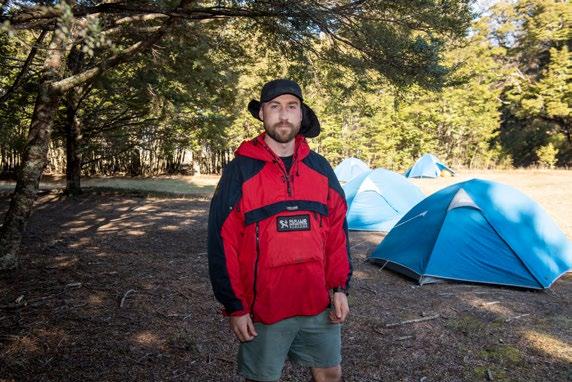
| #FACESOFYOURFORCE
“There’s a great amount of job satisfaction seeing the growth in the young people. For some, it can completely change the direction of their life for the better.”
–Corporal Harry Averill
SENIOR PUBLIC AFFAIRS ADVISOR ALEX MASON B Y
For Corporal Harry Averill, being a Youth Development Instructor is about making a positive impact and helping others.
22 | AIR FORCE NEWS #251
From forensics lab to Military Police
Aircraftman Jess Kite was looking for opportunity and purpose when she joined the Air Force.
The 25-year-old has now found exactly that as she begins her Military Police trade training after recently graduating Base Woodbourne’s recruit training.
Aircraftman (AC) Kite gained a Bachelor of Applied Science majoring in Forensic Analytical Science and a minor in Genetics from Otago University but was not sure where that was going to take her.
“I started looking at other career options that could still incorporate aspects of my degree subject area.
“What the Air Force could offer in terms of the Military Police role was really appealing and the opportunity to grow within the New Zealand Defence Force seems endless,” AC Kite said.

The Military Police’s job is to protect the Defence Force’s people and resources from crime and keep sailors, soldiers and aviators safe in Aotearoa New Zealand and overseas.
AC Kite said she was looking forward to continuing to learn and develop her skills in her upcoming trade training at Trentham Military Camp.
“I am looking forward to taking advantage of opportunities as they arise, gain experience that goes with it and hopefully get a chance to do a bit of travelling, whether it’s on exercise, operations or training with services.”
One of the highlights of the recruit course was honing new skills at Marlborough’s Dip Flat training area, and that while there were challenges, there were always ways to manage them, she said.
“It put all our theory from classroom into practice. It was an amazing learning experience, and was a great feeling to use some of the skills and knowledge we had learnt and to understand why we needed to learn them.
“This course is all about challenging you and pushing you outside of your comfort zone so you can grow as a person.”
AC Kite said that anyone wanting to join the Air Force should be open-minded and prepared to face challenges both physically and mentally.
“You will be pushed out of your comfort zone but not to your breaking point.
“If you take on all the challenges, give it one hundred percent, support your fellow recruits and have a positive mind-set, you’ll have a great time on recruit course.”
#FACESOFYOURFORCE |
AIR FORCE NEWS #251 | 23
The long history of No. 42 Squadron
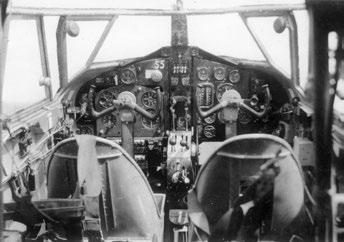
No. 42 Squadron has been an integral part of the Air Force for 79 years and its aircrew have flown nearly a dozen aircraft from Bases Auckland and Ohakea. In its time the squadron has flown VIPs, been on hand to transport officials when natural disasters have hit the country and been at the forefront of a world-first agricultural breakthrough.
“W
e’ve still got some great potential, yet unrealised, that we hope to tap into in the coming years,” No. 42 Squadron Commanding Officer Squadron Leader (SQNLDR) Freddy Ferris said.
The most recent aircraft fleet to join the squadron is the King Air 350. Two of the four aircraft are fitted with air warfare officer (AWO) training consoles and sensor suites, allowing for training of AWOs, and Navy observers. All four aircraft are used in multi-engine pilot training. The purchase of the modern fleet meant AWOs no longer needed to complete their training in Australia.
Inside the aircraft can be either an eight passenger seat configuration or the AWO and observer training consoles.
The squadron of today is vastly different to when it was formed to provide a national communications service, at Wellington’s Rongotai Airport in 1943.
The squadron flew North American Harvard, Auster, Grumman Avenger, Airspeed Oxford, de Havilland Devon, North American P-51 Mustang, Douglas Dakota, Hawker Siddeley Andover and King Air aircraft.
Its pilots flew Avengers in the first ever aerial topdressing trial, spreading superphosphate fertiliser alongside the runways at Base Ohakea.
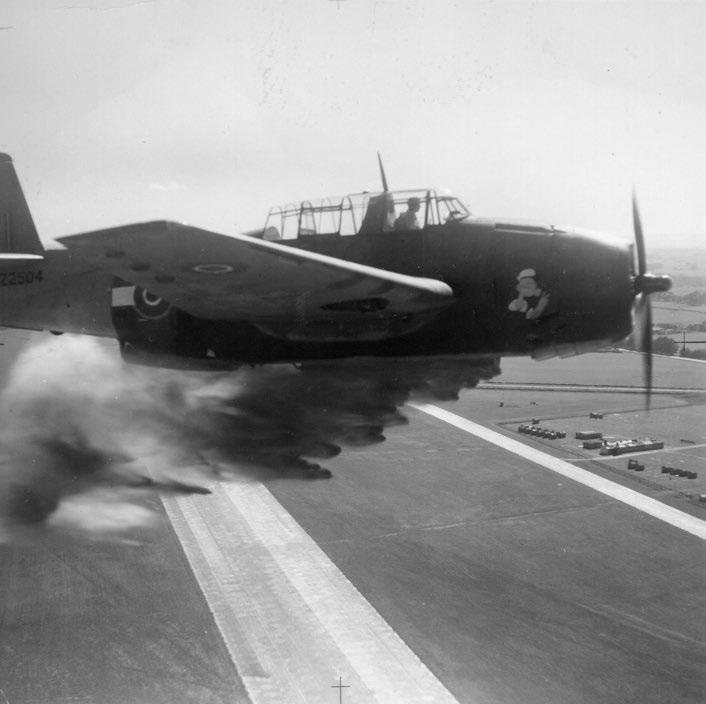
The introduction of the Dakota and Devon brought VIP flights to the squadron’s tasks, alongside multi-engine conversion courses (Oxford and Devon), and general transport flying around Aotearoa New Zealand and the South Pacific region.
Today the squadron boasts about 35 uniformed personnel who work alongside a commercial contractor providing aircraft maintenance.
It conducts AWO ab-initio training, AWO instructor training and provides pilots a multi-engine training platform prior to postings to larger fixed wing aircraft units. They also take on domestic transport tasks, SQNLDR Ferris said.
“We do a bit of everything really - it’s a bit of a melting pot. We’ve also got a melting pot of people too, some of the senior members are in their fifth decade of flying, and they are really experienced.
EDITOR REBECCA QUILLIAM B Y
1 2 85 YEARS OF SERVICE 24 | AIR FORCE NEWS #251
“We’ve got people who come from the other three domains like maritime, transport and rotary who all come back to No. 42 Squadron. So there’s a lot of diverse experience and outlooks here. We use that to our advantage.”
Alongside all its training outputs, the squadron needs to remain flexible when a natural disaster hits and officials and ministers need to be flown to the impacted area. Most recently during the Marlborough floods, the squadron flew Prime Minister Jacinda Ardern to the area in a King Air 350.
“We actually are really busy. We were one of the busiest units during the various lockdowns, partly because it was safer for people like the Prime Minister and other ministers to fly in the King Air rather than in public transport.”
The multi-engine training, for pilots to later transition to the P-3K2 Orion, C-130 Hercules or Boeing B757 aircraft, used to be done solely through domestic tasks, but now they also get the experience by flying missions for the AWO course or the AWO instructor course, SQNLDR Ferris said.
“They’ve now got a wider breadth of experience. And part of it now also includes operating in a multi-crew environment, which is a wider set of experiences than we were providing three or four years ago.
“We are a jack of all trades. We’re suffering the same challenges as everyone else, and that includes regenerating experiences outside New Zealand.”
A piece of No. 42 Squadron history has returned to Ohakea, with the Air Force’s Heritage Flight renovating a Mustang that used to be part of the squadron’s fleet, SQNLDR Ferris said.
“When we talk about a long history and all the aircraft being operated in different roles, there is a nice circle back to our past.
“We’ve always had a changing role, especially in the past few years, and it’s inevitable there will be more change in the future. We look forward to that.”
ONE Cockpit of Airspeed Oxford
TWO
Avenger dropping fertiliser over RNZAF Station Ohakea during the first phase of aerial topdressing trials
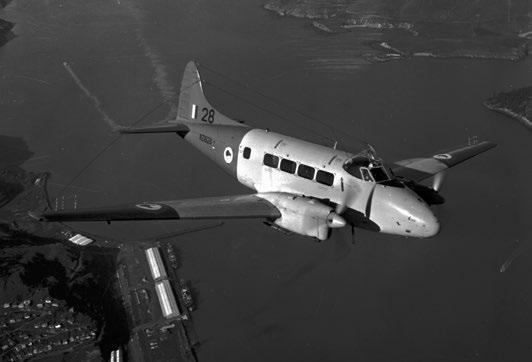

THREE Dakota dropping parachutists
FOUR
Devon in flight over Lyttelton Harbour
FIVE
Harvards in flight over the sea heading to Wellington
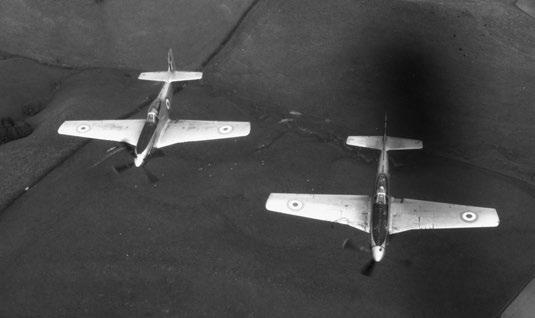
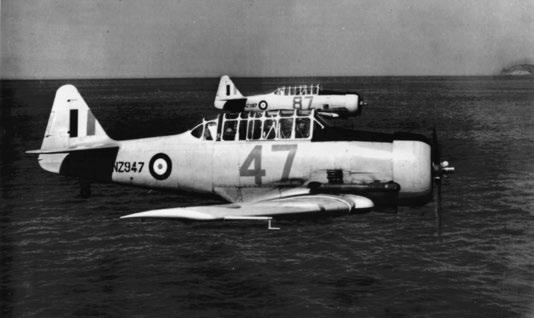
SIX
Air to air of two Mustangs
Photos: Air Force Museum of NZ
3 4 5 6 85 YEARS OF SERVICE | AIR FORCE NEWS #251 | 25
HUMINT: An aviator’s story













Human Intelligence (HUMINT) is an area of intrigue, if not for its history of tradecraft that conjures up images of spies, then simply to be allowed into the inner circle of a seemingly closed-off trade.











Iwork in Air Intelligence so I had a basic understanding of HUMINT. I knew there was a tough selection process (admittedly naïvely), but the reward of the challenge was a skill too good to pass up, if I passed I could be let into a world where you could understand people on a whole other level.
I started out by doing the tri-Service debriefing course. This course isn’t a walk in the park, it’s designed to test people in situations where they need to remain level-headed. It was the tip of the iceberg to HUMINT and it was fascinating, so I decided to sign up for the HUMINT selection course.


Information about the process appeared deliberately vague – not surprising considering the trade, which made preparation a slight challenge. Being from the Air Force, I did the best I could to prepare: physical training (PT) and rigid adherence to the required kit list. I figured part of the course was to see how you reacted in unfamiliar situations, which of course you can’t prepare for. So I went into it fairly open-minded, and ensuring I could do a lot of press-ups.
The experience was a paradox of the unknown and certainty. The tasks were foreign and unpredictable, however the pressure was entirely expected. I anticipated being uncomfortable, and I certainly felt that a number of times!

The assessments included scenario based testing to observe our reactions in different settings. In some ways this makes the course easier – you cannot, and should not prepare for these, so you can actually relax a little (provided you are ready to operate at a moment’s notice in any situation!).
I wasn’t let down on Army PT, there were multiple physical activities – and the stereotype of Army vs Air Force PT exists for a reason, my fitness was certainly tested. I was the only woman on this intake, and while I wasn’t leading the pack in PT, I held my own and assimilated with the other candidates.
Only a few women have joined the HUMINT trade. This wasn’t the reason I signed up or the motivator to continue but on reflection perhaps it should have been.
The course wasn’t easy, and it would be a cliché to describe it as rewarding - which of course, it was. But getting through it and being offered a spot to complete the training justified the brief moments of physical, cognitive, emotional and psychological discomfort I’d experienced – it made it that much better to pass!
“I believe that women can bring a unique interpersonal skillset to HUMINT collection, and therefore a necessity for the NZDF.”
–Intelligence specialist
| INTELLIGENCE
26 | AIR FORCE NEWS #251
Leading the way with milk
CHARLENE WILLIAMSON B Y
Open any fridge, at any squadron at Base Woodbourne and you will find glass bottles filled with locally supplied milk.
It is the forward-thinking initiative of Sergeant (SGT) Hahn Stuart that has seen Woodbourne workplaces switch from plastic to glass in an effort to curb the amount of plastic waste that goes to landfill.
Unfortunately not all plastic is recycled and he saw the opportunity to switch as a win-win.
“My family had started getting milk from a local company at home and I thought it would be great if base could also benefit,” SGT Stuart said.
In late 2019 he proposed the switch to glass from plastic, which meant that Woodbourne had the opportunity to lead the way in sustainability, and reduction in waste to landfill. In 2020 SGT Stuart’s squadron, the Residential Servicing Control Team, implemented the glass milk system and in July 2021 all squadrons on base also switched.
While it was a long process to get implemented SGT Stuart said it was worth it and to see his idea come to life has been rewarding.
“This is the direction that we should be moving to as a society to minimise waste especially when recycling is not an option, it is also an added bonus for us that the product is superior.
“Air leading the way for the NZDF shows our innovation and ability to think outside the box, this should set the challenge for further innovation,” SGT Stuart said.
The one litre glass bottles of A2 milk, purchased through Oaklands Milk, a local Marlborough company located in Nelson, are delivered to base daily. In turn, they pick up the used glass bottles, take them away and they are washed and reused again.

Base Commander Woodbourne, Wing Commander (WGCDR) Paul Drysdale said something as simple as glass milk bottles allows base to do its part in sustainability, while also supporting local.
“Something as small as switching from plastic to glass can have a significant impact on the environment and minimising waste that goes to landfill.
“We are proud to be contributing in a small way like this,” WGCDR Drysdale said.
This initiative has almost completely removed the plastic milk bottle waste produced by base. The only exceptions are the messes and Fernleaf which are bound by ESS contract.
COMMUNITY |
SENIOR COMMUNICATIONS ADVISOR
AIR FORCE NEWS #251 | 27
Royal aircraft a jewel in the crown
AIR FORCE MUSEUM OF NEW ZEALAND MICHELLE SIM, COMMUNICATIONS MGR B Y
Residing in contented retirement at the Air Force Museum of New Zealand is one grand old aircraft with a very special history.
Douglas C-47 Dakota NZ3551 is a jewel in the crown of the Air Force Museum’s collection. One of the most successful aircraft designs of all time, the C-47 was the military version of the well-known commercial airliner, the DC-3, and was also the Air Force’s first transport aircraft.

The significance of this particular aeroplane goes far beyond its core role, however, with connections to our late Queen.
In 1953 it was allocated to No. 42 Squadron and selected for conversion to VIP configuration as the flagship aircraft for the Royal Tour of newly-crowned Queen Elizabeth and her husband the Duke of Edinburgh.
ABOVE
TOP MIDDLE
Queen
BOTTOM MIDDLE
Crew
TOP RIGHT
The
BOTTOM RIGHT
The aircraft was part of the last batch of Dakotas delivered to the Air Force. It was manufactured at the Douglas aircraft factory in Oklahoma City, USA, and arrived at Whenuapai on 14 August 1945, the day before the Japanese surrender, which ended World War II.
After serving briefly with No. 40 Squadron, NZ3551 carried out general transport duties with No. 41 Squadron, including frequent supply flights to Japan in support of New Zealand occupation forces there.
The aircraft was completely stripped out and refitted with plush carpets, leather reclining seats and rimu panelling. Crests of each Air Force squadron in service at the time were displayed in the cabin, and there was even a separate toilet and dressing room for the convenience of the royal couple and their attendants.
The aircraft had a crew of six, captained by decorated wartime pilot Squadron Leader Larry Siegert, who later became Chief of Air Staff. A second Dakota was designated as a Royal Courier aircraft, tasked with transporting equipment and baggage for the royal party.
The Royal Tour was a massive event for New Zealand, as it was the first time a reigning monarch had visited the country. It was a different time; many New Zealanders still felt closely connected to the United Kingdom and were ardent supporters of the British Royal Family.
| OUR HERITAGE
Dakota NZ3551 on display in the Aircraft Hall at the Air Force Museum of NZ
Elizabeth II disembarking Dakota NZ3551 at Kaikohe airport
of VIP Dakota NZ3551 during the Royal Tour. Far left is the captain, Squadron Leader Larry Siegert, later Chief of Air Staff
VIP dressing room aboard NZ3551
Interior view of the cabin of NZ3551, in its original VIP configuration
28 | AIR FORCE NEWS #251
It is estimated that three out of every four New Zealanders turned out to see the Queen during this first visit, with many going to extraordinary lengths to show their devotion.
From 23 December 1953 to 31 January 1954, the Royal couple travelled the length and breadth of the country, visiting 46 towns and cities, from Kaikohe in the far north to Bluff in the deep south.

They embarked on the Dakota for longer stretches, while shorter distances were covered by car or train. Everywhere they went, they were greeted by adoring crowds.
NZ3551 continued in its VIP role for many years after the coronation tour, transporting other members of the Royal family, heads of state and other important visitors around New Zealand until its retirement in 1977, when it was added to the Air Force Museum’s collection.
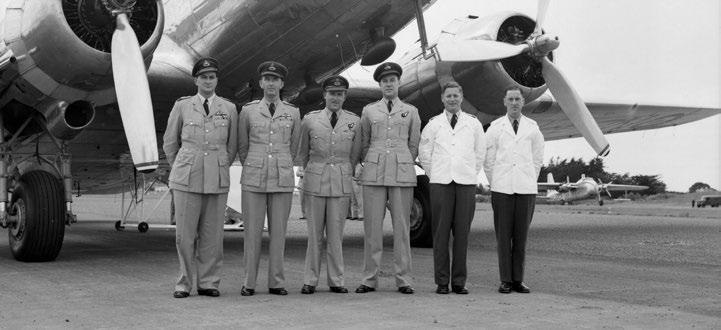

Today, the aircraft sits in prominent position in the Aircraft Hall, still resplendent in its VIP livery, its interior a time capsule of former glory days.
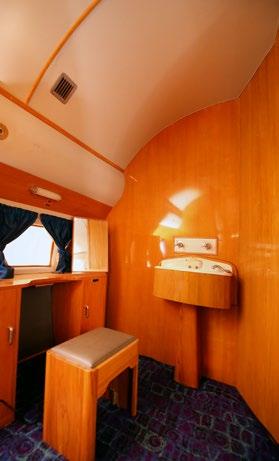
OUR HERITAGE |
AIR FORCE NEWS #251 | 29
In a league of their own
My first Air Force sporting involvement was with the RNZAF League team. Players both from Auckland and Ohakea came together in early August to begin a week-long training camp preparing us for a game against the NZ Police.
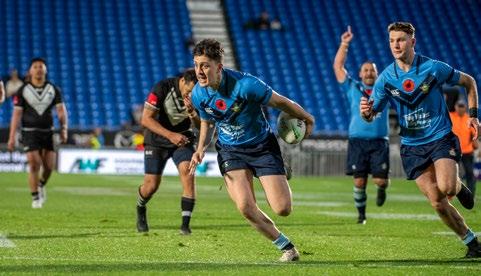
The match was the curtain-raiser to a battle between the New Zealand Warriors and the Bulldogs at Mt Smart Stadium on August 12.

The training camp leading up to the game was unforgettable, from the training to the time off the field with the team. It was a very professional environment during that week also, which helped the team really switch on when it came to serious times. The coaching staff and managers were amazing, they made everything run so smoothly and most definitely put in the hours behind the scenes.
Game day arrived and we travelled out to the stadium. Running out onto the field with the brothers to start the game was unforgettable.

| SPORT AIRCRAFTMAN CAMERON HANSFORD B Y
30 | AIR FORCE NEWS #251
Friends and family watched in the grandstand and others watched live on television.
Once the game started the boys were off to a bit of a slow half with a few tries getting scored against us early on. Lucky we had Dante Henry to score a try late in the first half to spark the team up and get us back in the game.
Half-time came and the lads got a second wind coming out into that second half and narrowed the score after tries from Corporal (CPL) Cam Nicholas and Leading Aircraftman (LAC) Dawie Kruger. Unfortunately the outstanding police side were just too strong and managed to pull away towards the end after scoring a few more tries on us. The final score was 34-16.
Standout players from my perspective were Aircraftman Noah Gosling, LAC Dante Henry, LAC Desmond Tyrell and CPL Cam Nicholas.
There are reasons why people join the forces and that week was one to remember for me for being one of my best experiences so far.
Finally big ups to the Navy and Army lads that helped us out, and to our managers and coaching staff, thank you, without these people nothing would ever happen like this.
DID YOU KNOW…
• Score: 32-16 to the NZ Police
• Player of the Match: Leading Youth Development Specialist James Faleofa
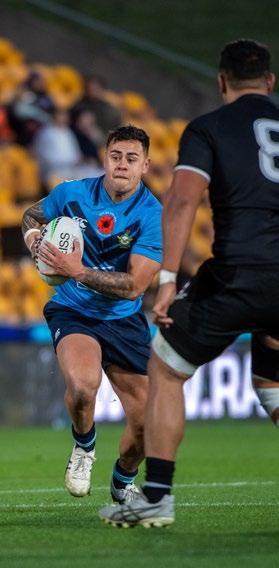

• The team was made up of 14 Air Force, three Navy and two Army players
• This is the third time the team has played the NZ Police (Mt Smart 2019, RNZAF Base Auckland 2020, Mt Smart 2022)
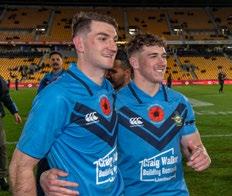
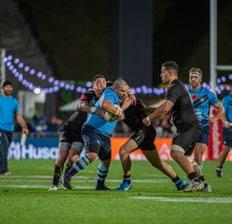
• On the line is the Heroes Cup, which was created in 2019
• The match will hopefully be a yearly fixture at Mt Smart Stadium
• Thanks to Captain – CPL Cam Nicholas, Vice-Captain – LAC Dante Henry, Coaches – Mr Matty Cole & SGT Tai Benedito, Trainers – F/S Topi Taru & FGOFF Chris Moohan, Managers – SGT Tash Wineera & CPL Logan Corbishley
SPORT |
International collaboration key to space warfare
Collaboration with partners will be a key feature of space warfare planning and tactics, says the RNZAF officer invited to the first Five Eyes tactician course, held at Vandenberg Space Force Base in the United States.

Hosted by Space Delta 5’s 55th Combat Training Squadron, the eight-day course consisted of 27 total personnel, 19 students and seven instructors, from Australia, Canada, New Zealand, United Kingdom and the United States. It was aimed at enhancing current global space operations through effective planning.
New Zealand’s representative was Squadron Leader (SQNLDR) Derek Bezuidenhout, the Space Operations Integration lead for the Defence Force Space Program.
“My role was to gain qualification in space planning and tactics, and foster relationships with our partners to better leverage space effects available to our Joint Forces. This was primarily achieved through developing awareness on how planning and coordinating resources in the space domain supports our Joint Forces through a future Defence Force Space Operations Centre,” he said.
“Collaboration in the space domain is essential to coordinate space capability effects available to our Joint Forces, so the course enabled us to build partnerships and connections with Five Eye nations and their Space Operations Centres.”
Space warfare, planning and tactics is developing rapidly as the domain becomes more contested and is used to achieve military objectives, SQNLDR Bezuidenhout said.
US Space Force Captain Richard Davis, 30th Operations Support Squadron weapons and tactics flight commander, said it was the first-ever Five Eyes tactician course of its kind because it incorporated multiple allied nations.
Previous courses typically focussed 10 years into the future, staying at the strategic level. This year maintained a tactical level aimed specifically at identifying planning gaps across the coalition, he said.
During the course, each nation provided insight to its own sovereign capabilities and planning methodologies, allowing for the meshing of ideas and concepts between one another.
With each nation providing a different perspective on the conduct of space operations, the course would immediately benefit those handling day-to-day operations by bringing awareness to each nation’s individual efforts to be responsible users of space.
“Our legacy of fighting as an alliance provided the jump start to coalition space operations and greatly enhances each nation’s space capability just as it does in the terrestrial domains,” said Australian Air Force Lieutenant Colonel Jordan Norrish.
“Combined space operations proves the whole coalition is greater than the sums of the individual national parts.”
| SPACE
Notices
HUMAN INTELLIGENCE INTAKE
HUMINT is conducted by both specialist and non-specialist HUMINT entities with utility at tactical, operational and strategic levels across all services.
Units throughout Defence are employing qualified personnel to capture information of intelligence value. The NZDF also has a specialist HUMINT Source Operations unit in 1 NZ BDE.
Training will take place at the School of Military Intelligence and Security (SMIS), Mission Command Training Centre (MCTC).
SMIS training opportunities will include debriefing, tactical questioning, specialist HUMINT trade courses, and a four-day assessment designed to identify personnel from across the NZDF who are suitable for specialist HUMINT training.
To find out more about joining the NZDF Defence Human Intelligence capability team, please visit the NZDF ILP Intranet site.
AOS TRADE DISBANDMENT EVENT
Calling all retired “ORDs” including those still serving in various NZDF roles to register interest to attend an Air Ordnance Specialist (AOS) trade disbandment event early to mid-2023.
This trade was previously named Air Ordnanceman (AOM). This registration is non-commital however will help guide planning and identify those interested. Intent is for this event to occur as a standalone directly prior or after the main P-3K2 Orion retirement event in 2023. Please email Sgt Joe O’Malley at address JOSEPH.O’MALLEY@nzdf.mil.nz if interested. Level of interest will guide scale of event.
Join the Youth Development Unit and help our rangatahi/young people thrive.
Sign up now for our next basic course – 14 to 24 Feb 2023, Trentham. Open to personnel qualified for CPL(E). Section Commander (TriService) positions are currently available in Whenuapai and Trentham, with potential future openings in Ohakea and Burnham.
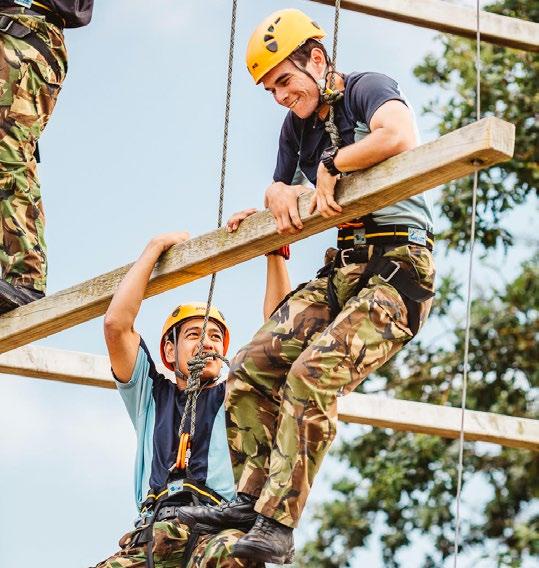
NOTICES |
Email: YDSBasicCourse@nzdf.mil.nz ARE YOU A MOTIVATED LEADER, LOOKING FOR YOUR NEXT DEVELOPMENT OPPORTUNITY?
OCTOBER 31 – NOVEMBER 4
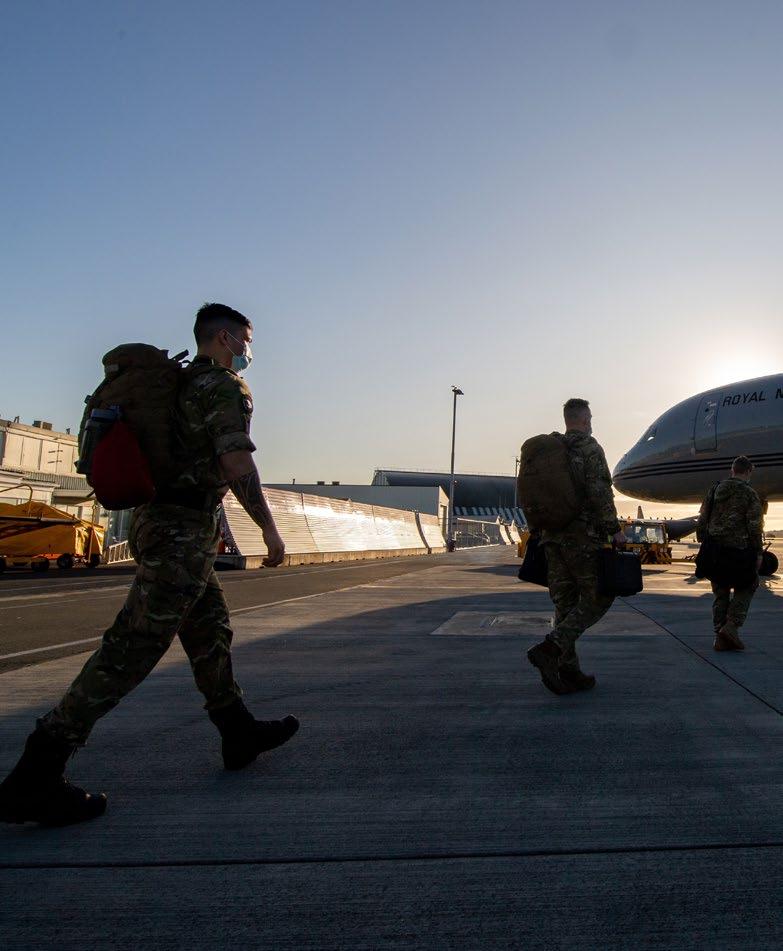
| PHOTO OF THE MONTH 34 | AIR FORCE NEWS #251
PETTY OFFICER CHRIS WEISSENBORN B Y
New Zealand Defence Force personnel depart for the United Kingdom to help train Ukrainian armed forces infantry. When our people leave for missions you often think about what they are going to experience, how they feel and what kind of stories they will bring back, but most of all I wish them a safe return.
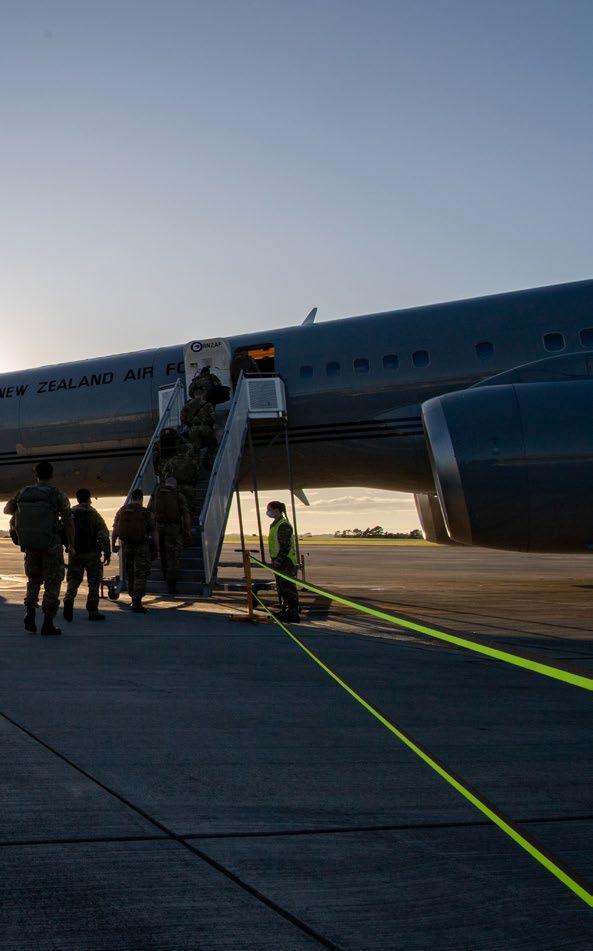
AIR FORCE NEWS #251 | 35
W
A


N
N E
ZE
L A
D R OYA L A E R O N AU T I C A L S O C I E T Y S Y M P O S I U M 2 0 2 2


















































































